-
 Bitcoin
Bitcoin $109,459.7682
2.44% -
 Ethereum
Ethereum $2,598.6052
6.29% -
 Tether USDt
Tether USDt $1.0003
0.00% -
 XRP
XRP $2.2734
3.95% -
 BNB
BNB $661.4886
1.58% -
 Solana
Solana $155.4825
4.35% -
 USDC
USDC $0.9999
-0.02% -
 TRON
TRON $0.2838
1.04% -
 Dogecoin
Dogecoin $0.1740
8.25% -
 Cardano
Cardano $0.6047
9.04% -
 Hyperliquid
Hyperliquid $40.2302
6.50% -
 Sui
Sui $2.9863
10.05% -
 Bitcoin Cash
Bitcoin Cash $509.5786
0.60% -
 Chainlink
Chainlink $13.8156
6.03% -
 UNUS SED LEO
UNUS SED LEO $9.0142
0.69% -
 Avalanche
Avalanche $19.0337
8.68% -
 Stellar
Stellar $0.2438
5.17% -
 Toncoin
Toncoin $2.9012
3.59% -
 Shiba Inu
Shiba Inu $0.0...01210
6.20% -
 Litecoin
Litecoin $90.0882
7.05% -
 Hedera
Hedera $0.1597
8.53% -
 Monero
Monero $326.3340
2.88% -
 Polkadot
Polkadot $3.6365
9.32% -
 Bitget Token
Bitget Token $4.6162
2.72% -
 Dai
Dai $1.0001
0.00% -
 Ethena USDe
Ethena USDe $1.0002
-0.01% -
 Uniswap
Uniswap $7.6403
10.47% -
 Pepe
Pepe $0.0...01060
12.03% -
 Aave
Aave $281.3664
7.56% -
 Pi
Pi $0.4992
1.76%
What is a hard fork coordinator?
A hard fork coordinator manages communication, timing, and execution of blockchain upgrades, ensuring all stakeholders align for a smooth transition.
Jul 03, 2025 at 12:42 pm
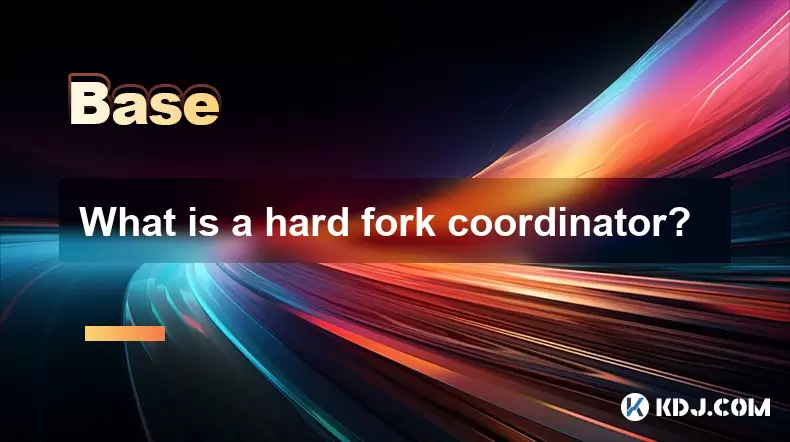
Understanding the Role of a Hard Fork Coordinator
In the world of blockchain and cryptocurrencies, a hard fork coordinator plays a critical role during major network upgrades. A hard fork is a significant change to a blockchain’s protocol that makes previously invalid blocks or transactions valid (or vice versa). This type of upgrade requires all nodes on the network to update to the latest version of the software to remain compatible with the new rules.
The hard fork coordinator is typically an individual or group responsible for organizing and managing the communication, timing, and execution of a hard fork. Their job is not only technical but also involves community management, ensuring that developers, miners, node operators, exchanges, and other stakeholders are aligned before the fork occurs.
Responsibilities of a Hard Fork Coordinator
A hard fork coordinator must handle multiple responsibilities simultaneously. These include:
- Coordinating development teams: Ensuring that core developers are in sync regarding the changes being introduced.
- Engaging with the community: Communicating updates, timelines, and potential risks to users and investors.
- Working with mining pools and validators: Confirming that they are ready to support the upgraded chain post-fork.
- Liaising with exchanges: Making sure that platforms list both chains if a split occurs, or only the upgraded one.
- Preparing contingency plans: In case of unexpected issues, such as low adoption or network instability.
These tasks require strong organizational skills, deep technical knowledge of blockchain mechanics, and excellent communication abilities.
How Does a Hard Fork Coordinator Operate?
The operation of a hard fork coordinator begins long before the actual fork takes place. They start by identifying key players involved in the upgrade process. This includes developers who write the code, miners or validators who secure the network, wallet providers, and exchange operators.
Once these parties are identified, the coordinator initiates a structured communication plan, which may involve:
- Hosting online meetings or forums
- Publishing detailed documentation about the proposed changes
- Setting up testing environments (e.g., testnets)
- Monitoring social media and community feedback
They also work closely with developers to ensure the fork code is thoroughly tested and reviewed before deployment. If any vulnerabilities are found, the coordinator may delay the fork or suggest modifications.
Examples of Notable Hard Fork Coordinators
Several prominent figures have acted as hard fork coordinators in major blockchain events. For instance, during the Ethereum Classic (ETC) hard forks aimed at resisting 51% attacks, coordinators worked behind the scenes to align various stakeholder groups. Similarly, in Bitcoin Cash and Bitcoin SV splits, individuals like Amaury Sechet played central roles in coordinating the technical and community aspects of the fork.
These examples show how a well-coordinated effort can determine the success or failure of a hard fork. Without a clear leader or team guiding the process, confusion can arise, leading to network instability or even loss of funds.
Technical Aspects of Hard Fork Coordination
From a technical standpoint, a hard fork coordinator must understand several key concepts:
- Consensus mechanisms: Whether the network uses Proof of Work, Proof of Stake, or another model affects how the fork is implemented.
- Version signaling: Nodes signal support for upcoming upgrades via specific version bits.
- Block height activation: The exact block number at which the fork becomes active must be agreed upon and communicated clearly.
- Chain reorganization risks: If a significant portion of the network doesn’t upgrade, it could lead to temporary chain splits.
The coordinator ensures that all technical thresholds are met before proceeding with the fork, including miner readiness, wallet compatibility, and exchange preparedness.
Challenges Faced by Hard Fork Coordinators
Hard fork coordination is not without its challenges. Some of the most common difficulties include:
- Community disagreements: Not everyone in the ecosystem may agree with the proposed changes, leading to heated debates or even hostile splits.
- Timing conflicts: Different time zones, holidays, or unforeseen events can complicate scheduling.
- Security concerns: If the fork introduces new vulnerabilities, attackers might exploit them before widespread adoption.
- Communication breakdowns: Misinformation or lack of transparency can cause panic among users.
To mitigate these issues, the coordinator must maintain neutrality, provide timely updates, and foster open dialogue among all parties involved.
Frequently Asked Questions
Q: Is a hard fork coordinator an official position within a blockchain project?
A: No, it is usually a temporary or informal role taken on by a developer, community leader, or organization during the planning and execution of a hard fork.
Q: Can a hard fork occur without a coordinator?
A: Technically, yes, but the absence of a coordinator increases the risk of miscommunication, poor planning, and network instability.
Q: How is a hard fork coordinator chosen?
A: Typically, the person or group with the most influence in the community, technical expertise, and stake in the network steps into this role voluntarily or through consensus.
Q: Do all hard forks result in two separate chains?
A: Not necessarily. If the majority of the network adopts the new rules, the old chain may become obsolete. However, if there's significant resistance, a split can occur, resulting in two functioning chains.
Disclaimer:info@kdj.com
The information provided is not trading advice. kdj.com does not assume any responsibility for any investments made based on the information provided in this article. Cryptocurrencies are highly volatile and it is highly recommended that you invest with caution after thorough research!
If you believe that the content used on this website infringes your copyright, please contact us immediately (info@kdj.com) and we will delete it promptly.
- Crypto Summer Buys: Is Shiba Inu Out, and What's In?
- 2025-07-03 18:30:12
- Bitcoin, Solaris Presale, and Coin Watch: Catching the Next Wave
- 2025-07-03 19:10:11
- BONK ETF Buzz: Catalyst for a Meme Coin Moonshot?
- 2025-07-03 19:50:12
- Sui Coin, Bitcoin Solaris, and the Presale Opportunity: Catching the Next Wave
- 2025-07-03 19:50:12
- Sui Coin, Bitcoin Solaris, and Presale Opportunities: What's the Buzz?
- 2025-07-03 19:55:14
- MEXC's Bitcoin Reserves: A Fortress of Asset Coverage
- 2025-07-03 19:55:14
Related knowledge

What is open interest in derivatives?
Jul 03,2025 at 02:49pm
Understanding Open Interest in DerivativesOpen interest is a critical metric used in the cryptocurrency derivatives market, particularly when analyzing futures and options contracts. It represents the total number of outstanding contracts that have not been settled or closed by either party involved. Unlike trading volume, which counts all trades made i...
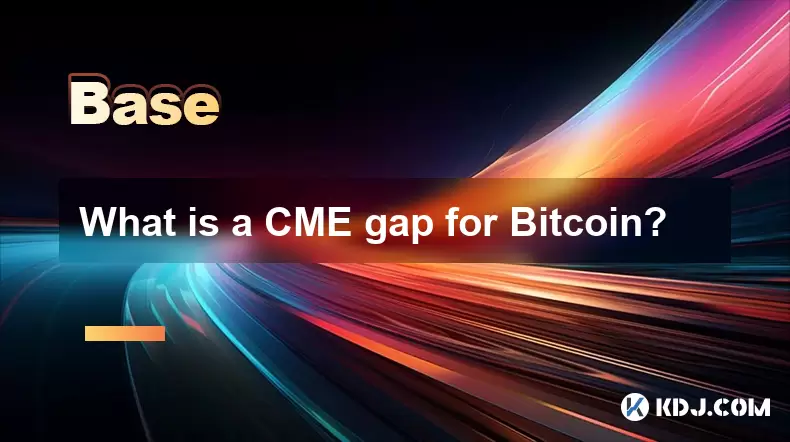
What is a CME gap for Bitcoin?
Jul 03,2025 at 05:49pm
Understanding the Concept of a CME GapA CME gap refers to a discrepancy in price between the closing price of Bitcoin on the Chicago Mercantile Exchange (CME) and its opening price when trading resumes. This phenomenon occurs because the CME operates during specific hours, typically aligned with traditional market hours, while cryptocurrency markets ope...
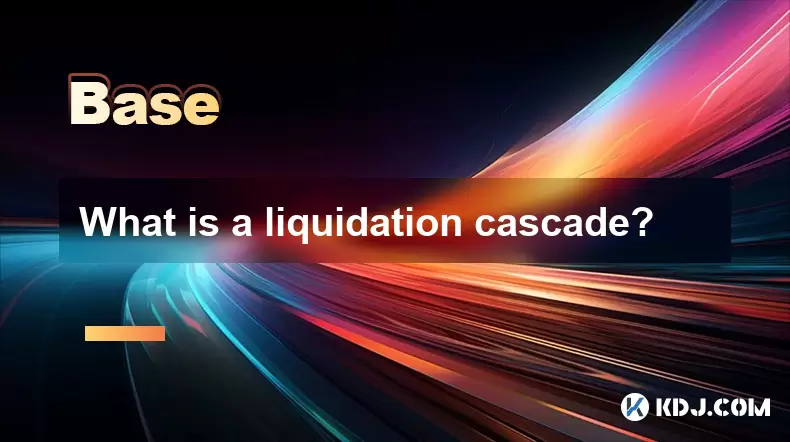
What is a liquidation cascade?
Jul 03,2025 at 07:15am
Understanding the Concept of LiquidationIn the realm of cryptocurrency trading, liquidation refers to the process by which a trader's position is automatically closed due to insufficient funds to maintain the leveraged trade. This typically occurs when the market moves against the trader's position and their account equity falls below the required maint...

What is a hard fork coordinator?
Jul 03,2025 at 12:42pm
Understanding the Role of a Hard Fork CoordinatorIn the world of blockchain and cryptocurrencies, a hard fork coordinator plays a critical role during major network upgrades. A hard fork is a significant change to a blockchain’s protocol that makes previously invalid blocks or transactions valid (or vice versa). This type of upgrade requires all nodes o...
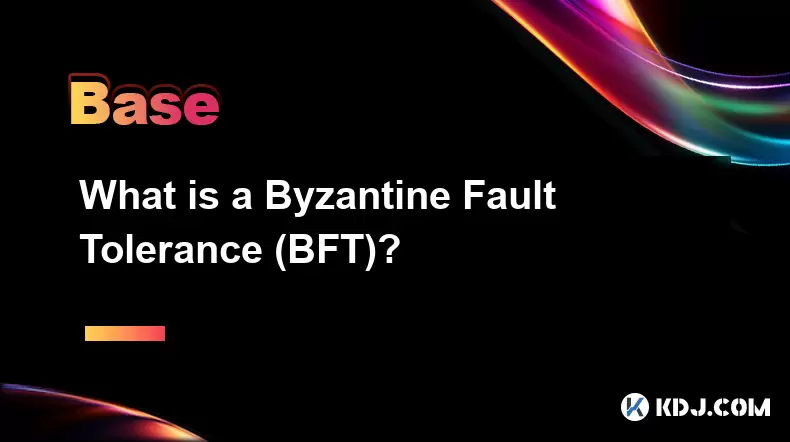
What is a Byzantine Fault Tolerance (BFT)?
Jul 03,2025 at 11:49am
Understanding the Concept of Byzantine Fault ToleranceByzantine Fault Tolerance (BFT) is a critical concept in distributed systems, particularly within the realm of blockchain technology and cryptocurrencies. It refers to the ability of a system to continue functioning correctly even when some components fail or behave maliciously. The term originates f...
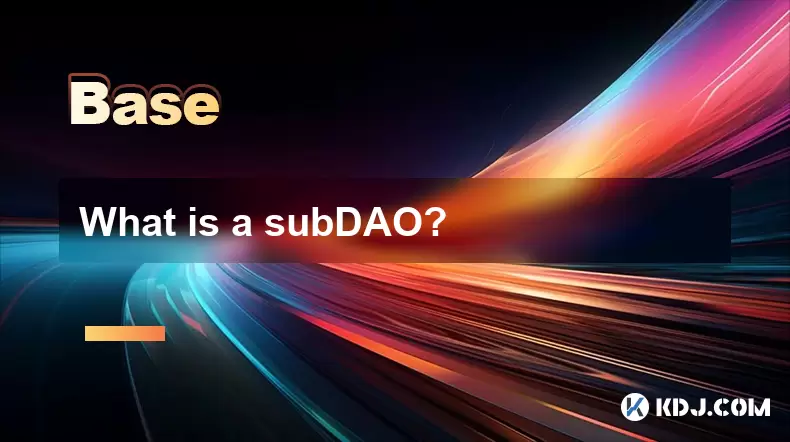
What is a subDAO?
Jul 03,2025 at 09:36am
Understanding the Concept of SubDAOA SubDAO, short for Sub-Decentralized Autonomous Organization, is a specialized entity that operates under the umbrella of a larger DAO (Decentralized Autonomous Organization). It functions with its own set of rules, governance mechanisms, and tokenomics while remaining aligned with the overarching goals of the parent ...

What is open interest in derivatives?
Jul 03,2025 at 02:49pm
Understanding Open Interest in DerivativesOpen interest is a critical metric used in the cryptocurrency derivatives market, particularly when analyzing futures and options contracts. It represents the total number of outstanding contracts that have not been settled or closed by either party involved. Unlike trading volume, which counts all trades made i...

What is a CME gap for Bitcoin?
Jul 03,2025 at 05:49pm
Understanding the Concept of a CME GapA CME gap refers to a discrepancy in price between the closing price of Bitcoin on the Chicago Mercantile Exchange (CME) and its opening price when trading resumes. This phenomenon occurs because the CME operates during specific hours, typically aligned with traditional market hours, while cryptocurrency markets ope...

What is a liquidation cascade?
Jul 03,2025 at 07:15am
Understanding the Concept of LiquidationIn the realm of cryptocurrency trading, liquidation refers to the process by which a trader's position is automatically closed due to insufficient funds to maintain the leveraged trade. This typically occurs when the market moves against the trader's position and their account equity falls below the required maint...

What is a hard fork coordinator?
Jul 03,2025 at 12:42pm
Understanding the Role of a Hard Fork CoordinatorIn the world of blockchain and cryptocurrencies, a hard fork coordinator plays a critical role during major network upgrades. A hard fork is a significant change to a blockchain’s protocol that makes previously invalid blocks or transactions valid (or vice versa). This type of upgrade requires all nodes o...

What is a Byzantine Fault Tolerance (BFT)?
Jul 03,2025 at 11:49am
Understanding the Concept of Byzantine Fault ToleranceByzantine Fault Tolerance (BFT) is a critical concept in distributed systems, particularly within the realm of blockchain technology and cryptocurrencies. It refers to the ability of a system to continue functioning correctly even when some components fail or behave maliciously. The term originates f...

What is a subDAO?
Jul 03,2025 at 09:36am
Understanding the Concept of SubDAOA SubDAO, short for Sub-Decentralized Autonomous Organization, is a specialized entity that operates under the umbrella of a larger DAO (Decentralized Autonomous Organization). It functions with its own set of rules, governance mechanisms, and tokenomics while remaining aligned with the overarching goals of the parent ...
See all articles

























































































